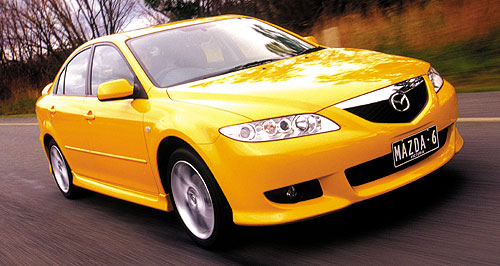200,000 more vehicles caught up in airbag recall
BY RON HAMMERTON | 10th Jun 2015

Worldwide, about 50 million vehicles have been caught up in the airbag inflator scandal that has been blamed for up to seven deaths and numerous injuries from metal fragments sprayed into vehicles when the airbags deploy in a crash.
The latest recalls in Australia include more than 70,000 Mazda6 sedans and wagons sold between 2002 and 2009. Other Mazda vehicles affected by the recall include the RX-8 sports coupe, the E-Series van, T-Series truck and B2500/B2600 one-tonne ute sold between August 2002 and November 2007.
It is the second such airbag recall issued by Mazda vehicles, with the first notice posted on the Australian Competition and Consumer Commission (ACCC) recall website a year ago.
After previously foreshadowing a major recall over the Takata airbags, Nissan has formally added 119,000 vehicles to its recall list, on top of the previous 37,300 cars recalled in 2013 and 2014.
The latest recall covers the N16 Pulsar, Y61 Patrol, D22 Navara, J31 Maxima and T30 X-Trail models built between January 2004 and March 2007.
As well, Nissan has amended a previous recall notice for similar models built between April and December 2003, with a 16,092 vehicles now caught up in that airbag affair.
The airbag problem is so vast that the manufacturers are not exactly sure how many vehicles are still on the road and, because of the age of some of them, who owns them.
Staff at affected companies are trawling databases to try to locate as many owners as possible by mail, while also advertising nationally to fill the gaps.
In an unrelated matter, Subaru Australia has issued a safety recall for 5073 of its latest 2015 Libertys and Outbacks over a software glitch that might cause the autonomous emergency braking system to misfire.
The problem relates to the brake lamp switch that, if it fails, will effectively disconnect the emergency braking system when the car is running in adaptive cruise control mode.
Subaru says the driver can still manually apply the brakes should the automatic system fail to engage.
The company says the software fault can be fixed by downloading a new software program, taking just a few minutes at a Subaru dealership.
The problem was discovered by Subaru’s own engineers, and no crashes or injuries have been reported anywhere in the world.
All of the recalls, including relevant Vehicle Identification Numbers (VINs) are detailed on the ACCC website which has been running hot with such notices this year.
